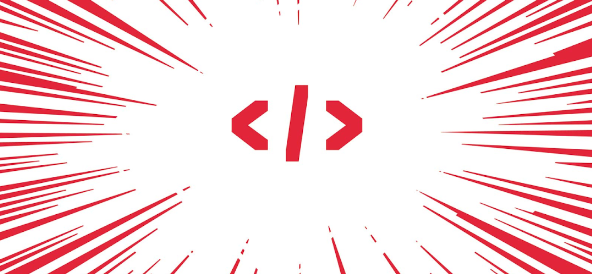TL;DR: This guide covers why to start a newsletter, how to structure and promote it, and seven ways to make money from it. It’s ideal for anyone looking to enhance their email outreach and revenue.

Part 1: Why you should start a newsletter
You don’t own your social media audience, but an email list is the best way to capture the value you’re creating on social media platforms.
That’s where newsletter marketing comes in. A newsletter works for anyone who sells products and services:
- Coaches can motivate their audience and sell packages
- Social media managers can offer tips and gain clients
- Musicians can share their journey and sell tickets
- DJs can share their latest mixes and get bookings
- Copywriters can share writing tips and land gigs
- Therapists can offer advice and get bookings
- Lawyers can offer advice and get clients
An email list allows you to monetize your audience more directly in the future — without paying for ads or events.
Your newsletter needn’t be long, either. You can share:
- A short daily note to brighten your audience’s day
- Weekly updates to keep your brand top of mind
- Monthly roundups to keep readers in the loop
How to structure your newsletter
Some format ideas for your newsletter include:
- News and industry updates: Keep your audience in the loop with a newsletter format perfect for journalists, talk show hosts, and bloggers. You’ll need access to news sources and reports in your industry. The secret to success is speed + relevance + POV.
- Interview summaries: Give your audience a new perspective with subject matter expert interviews. Your interviewee may also share your newsletter issue with their audience.
- Product reviews: Product recommendation newsletters help people compare and buy the best products. This format is perfect for people who sell, select, or simplify sales — retailers, curators, and marketplaces.
- Quote collections: Quotes motivate readers to think or feel differently about a topic. They are best for coaches, therapists, and book editors. Think 3-2-1 by James Clear.
- Personal stories: You don’t have to be a seasoned veteran with 30 years of experience. You can simply share your journey candidly. Stories help you connect with your readers more meaningfully.
- Guides: Guides are best for tactical topics like building your own website, repairing your car engine, or launching your own newsletter (ahem).
Types of newsletters for SaaS companies
For SaaS startups specifically, here are other email newsletter types to consider:
- Weekly updates: Keep your readers in the loop by sending them news or tips every week. This helps them remember you.
- Product news: Let people know when you add new app features or make changes.
- Welcome emails: When someone new joins your email list, send them a series of welcome emails. Use these to explain what you do and how it can help them.
- Win-back emails: If someone stops using your product or reading your emails, send them special emails to get them interested again.
- Free email course: Offer a short, free course by email. This is a good way to get new email addresses and teach something valuable at the same time.
- Trial guide: If you offer a free trial of your product, send new users a series of helpful emails. This can make them more likely to buy the full version.
- Regular check-ins: Send out emails that help your readers get better at something they find hard. For example, if they haven’t used a feature of your product, send them tips on how to start.
Each type of newsletter has its own use. Pick the one that fits your goals and your audience’s needs.
Match your newsletter format to your personality
Choose format(s) you’d enjoy writing most, as this will make writing easier.
- Teachers (like myself) enjoy publishing step-by-step guides to help people accomplish a goal.
- Curators enjoy finding and sharing the best products and do well with product highlights.
- Storytellers are good at sharing personal stories and quotes to motivate readers.
- Journalists want to break the news first and share interesting interviews.
Most people are a combination of the above. You might be a storyteller and journalist, and fuse those two formats in your newsletter.
Part 2: How to launch and promote your newsletter

Once you’ve decided to launch a newsletter, these 7 steps will set you up for success:
- Validate your target market
- Decide your frequency
- Decide your structure
- Choose your platform
- Map out your issues
- Write the first issue
- Promote it
#1 Validate your target market
Before starting your newsletter, think: who’s your audience? Knowing them helps you pick topics they’ll value.
To test interest, create a waitlist using Google Forms.
Then share on social media: “I’m exploring [topic] and considering a newsletter for [specific audience]. What topics interest you?”
Add a link to the form for email sign-ups. More emails mean more interest.
Next, decide your newsletter’s purpose. Do you want to
- Help your readers grow their businesses?
- Update them on the news?
- Improve their habits?
- Inspire them?
Your audience and goal shape your newsletter’s style and content.
Finally, choose a memorable name and plan your next steps.

#2 Decide your frequency
After confirming there’s interest, decide on your newsletter’s frequency.
Remember two things: don’t overburden yourself, and stay consistent.
If you can manage only one newsletter a week, that’s okay. Twice a month? That works too.
The key is regularity. If you commit to weekly, ensure you send it out every week.
Consistency keeps you on your readers’ radar. If you’re inconsistent, they’ll forget you, impacting your growth and sales.
Sticking to a schedule also boosts your discipline. It’s also wiser to set modest expectations and exceed them.
Sending two newsletters for a monthly commitment is better than sending the same amount for a weekly promise.

#3 Decide your structure
Once you’ve pinpointed your audience and frequency, focus on your newsletter’s layout. As discussed earlier, newsletters can cover:
- Humor through jokes or memes
- How-to guides and resources
- Current events and analyses
- Inspirational sayings
- Personal anecdotes
Often, it’s a blend of these elements. If you’re sending multiple times in a period, consider diversifying content.
For instance, use Tuesdays for sharing personal tales and Fridays for offering guides.
Some top-notch newsletters transition from a personal narrative to industry updates, sprinkle in resource links, and conclude with a pertinent quote.
The objective? Keep readers hooked. Your creativity is the only boundary.

#4 Choose your platform
After settling on the basics, it’s time to pick a platform for your newsletter. You’ve got a few options:
LinkedIn Newsletter
LinkedIn, in its Creator Mode, permits one newsletter per account.
Its advantage? No need for initial promotion. Upon releasing your first issue, all connections are alerted and can subscribe with a single click.
But, there’s a catch: you can’t access or backup your subscribers’ email addresses like you can with other platforms.
You can get around this by encouraging your LinkedIn Newsletter subscribers to sign up on another platform for additional updates or resources.
Substack
Substack stands out for its simplicity in publishing and potential for monetization. You’re free to view, export, and import your subscriber list.
The best part? It’s free. Only when you activate monetization do you part with a small portion of your earnings.
Other platforms
For those seeking more advanced features, like tailored subscription forms or segmented subscriber lists, platforms like Mailchimp, ConvertKit, Klaviyo, or ActiveCampaign might be more fitting.

#5 Map out your issues
After registering on your chosen platform, the next step is to sketch out the initial editions of your newsletter.
Let’s assume you’re curating a weekly fitness digest. Your content calendar could look like this:
- Week 1: Summer fitness strategies
- Week 2: Addressing prevalent fitness blunders
- Week 3: Must-have fitness gear
- Week 4: Evaluating and picking the ideal gym
… and so on.
Drafting this roadmap wards off writer’s block and allows for easier scheduling on your newsletter platform.
This schedule doesn’t need to be set in stone. Adjustments are natural.
For instance, by Week 3, you might feel compelled to discuss dietary protein instead.
If that aligns with your narrative, swap out the topic and reschedule the original for a later date.
#6 Write the first issue
You’ve laid the foundation for a promising newsletter. Now, it’s time to pen the first edition.
Don’t stress about making an instant splash. Just be authentic and clarify:
- Your motivation behind the newsletter
- What readers can anticipate
- How it will enrich their personal or professional lives
Aim for brevity, ideally under 500 words, and press ‘Publish’.
Pro tip: Encourage readers to respond to your emails. This tells email providers you’re a trusted recipient and keeps your emails out of spam folders.

#7 Promote it
Releasing a newsletter issue is just the beginning. Given the busy lives of readers, they might delay reading or get sidetracked.
Your role? Ensure your content remains visible. Strategies include:
- Requesting guest contributors to share the issue with their followers
- Hosting a Twitter Space centered on the recent issue
- Creating brief videos summarizing key takeaways
- Embedding a newsletter link in your online bio
- Featuring your newsletter in other newsletters
- Broadcasting the latest issue on social media
- Teasing upcoming content to pique interest
- Posting excerpts on your social platforms
For those using LinkedIn for their first issue, the platform automatically alerts all your connections.
Here’s a thread on how to engage and monetize your LinkedIn presence:
How to engage and monetize your LinkedIn presence: 🧵
— Dr Mo (@ShehuPHD) July 18, 2022
Most people only use LinkedIn to look for jobs.
They create a profile, add some info, and spend the rest of their time applying for jobs.
This is the wrong way to use LinkedIn.
Here's the no-BS playbook:
Part 3: 7 profitable ways to monetize your newsletter

If you’ve been doing everything right, you should have a highly-read newsletter with a growing audience.
You can measure this by looking at your:
- Subscriber growth rate — how many readers you add each month
- Open rates and clickthrough rates — how many people open your emails and click on links
If you’re seeing decent numbers, it’s time to consider monetizing your newsletter. There are 7 ways to do this:
- Physical products
- Digital products
- Sponsored ads
- Subscriptions
- Services
- Events
- Funds
Let’s explore each one.
#1 Sell physical products
Having a physical product, or plans for one, pairs well with a newsletter.
It helps guage demand and introduce it to an already engaged audience.
For instance, if your newsletter delves into global fashion trends, introducing your clothing line or accessories can tap into a ready market.
This strategy is great for different brands:
- Authors, like James Clear, might promote their latest publications.
- Retail giants like Woolworths or Tesco could highlight daily grocery offers.
- Brands like H&M might showcase weekly fashion collections.
They all harness the power of email to market physical goods. But what if physical products aren’t your thing?
#2 Sell digital products
Digital offerings present a lucrative income stream. Their charm lies in the “create once, sell endlessly” model.
Imagine you’ve initiated a newsletter focusing on social media strategies for budding entrepreneurs.
Crafting templates or courses can expedite their social media journey.
This not only offers them a cost-effective solution but also spares you the time typically spent on live consultations.
Selling a template at $5 to a thousand subscribers translates to a neat $5,000 for a product that merely needed a few hours of your time.
No hassles of inventory, packaging, or dispatch. A singular upload can seamlessly channel funds to you.
This model caters to different creative domains:
- Photographers can offer presets for software like Lightroom
- Music producers can sell beat collections
- Illustrators can market their artwork
- Writers can sell writing templates
Even software enterprises can boost revenue via newsletters.
Let’s say you’ve crafted a budgeting application. A newsletter guiding users to financial wisdom can direct them to your app for installation.
#3 Sell sponsored ads
Sponsored ads involve promoting third-party products or services. Brands are always looking to tap into niche audiences.
For instance, if you’ve cultivated a graphic design newsletter with 5,000 dedicated readers, you can offer ad spaces to brands offering design-related products or events.
This creates a win-win-win: readers discover new offerings, brands acquire customers, and you earn revenue.
You can experiment with ad formats like:
- A “Sponsored by” section in the email
- Detailed brand or product reviews
- Product shoutouts
The crux? Relevance. Your content, audience, and sponsored content must align. As your audience grows, so does your ad revenue potential.
P.S. Need a structured way to present your newsletter to potential sponsors?
Check out my pitch deck template on Gumroad: Get the template
#4 Sell subscriptions
Platforms like Substack, Ghost, Beehiiv, and Patreon have streamlined the process of monetizing newsletters via subscriptions.
They let you charge a monthly or yearly fee for accessing your content, while they manage the admin.
The beauty of the subscription model lies in its scalability. As your subscriber count grows, the cost-effectiveness of each issue improves.
Let’s break it down:
If you charge $10 monthly for your newsletter and have 10 subscribers, you’re pocketing $100 monthly.
But the time invested in researching, crafting, refining, publishing, and promoting each issue might outweigh that $100.
As your subscriber base expands, the returns amplify without increasing your workload. With 100 subscribers, you’re raking in $1,000 monthly, a tenfold increase, for the same effort.
The key is to continuously attract new subscribers with top-notch content.
The content you offer for free should be top-notch, setting the stage for readers to perceive value in your paid offerings.

#5 Sell services
Newsletters can be a potent tool for service-oriented businesses to boost their income.
Here’s how different sectors can harness this:
- A wellness spa can sprinkle spa package promotions amidst meditation insights in their newsletter.
- A motivational speaker can curate a leadership-focused newsletter, marketing their keynote speeches and training modules at the same time.
- A fitness coach can blend lifestyle advice with pitches for their personal training sessions.
The brilliance of this strategy lies in the symbiotic relationship between content and services.
Serving clients sparks fresh content ideas, enriching your newsletter.
Promoting this content attracts more subscribers, expanding your potential clientele.
#6 Sell event tickets
For those in the event management or venue business, newsletters can be a game-changer.
One of my first jobs involved curating a newsletter for a local bar-cum-theater.
Using Mailchimp, I’d announce the weekly events, and this strategy became a primary ticket-selling channel, rivaled only by social media.
Any entity in the event space should prioritize growing their email list. For instance:
- If you conduct leadership workshops, target corporate leaders with your newsletter and promote workshop tickets.
- If you run a wedding expo, offer growth strategies for industry peers, like photographers, and simultaneously market expo tickets.
- Post-event, use the platform to express gratitude to attendees and introduce upcoming events.

#7 Raise funds
One of the most profound ways to leverage a newsletter is by fundraising.
Consider these scenarios:
- Schools and universities can use newsletters to keep stakeholders informed and rally funds for various projects, such as infrastructure enhancements or student trips. If your niche is startups, you might attract investors to establish a venture capital pool. (A notable example is Packy McCormick’s Not Boring, which integrates sponsored content.)
- Nonprofits can share monthly updates and solicit donations.
In all these instances, your readers have a vested interest:
- Parents are keen on their children’s school advancements.
- Investors are rooting for more startup triumphs.
- Philanthropists are passionate about your mission’s success.
Tapping into these shared objectives helps you mobilize resources for meaningful initiatives.
Monetize your newsletter
No matter which newsletter monetization path you choose, the formula doesn’t change:
Great content + targeted audience + relevant product = 💰💰💰
- The better the content, the more people you attract
- The larger the audience, the more brands you attract
- The more relevant the offering, the more money you make
- The more money you make, the more you can invest in better writing, offerings, and promotion
It’s a virtuous cycle.
Implement a newsletter strategy today
Great newsletters stand out. They’re a direct line to your audience — a way to have a genuine conversation without the noise of social media algorithms.
It doesn’t matter if you’re a teacher, a musician, a writer, or even a lawyer. There’s room for you.
Platforms like LinkedIn, Substack, and Mailchimp have made the process simpler.
But here’s the thing: it’s not about the platform. It’s about what you say and how consistently you say it.
Offer real value, really understanding who’s reading, and present them with something they might want to buy.
You could sell products, get some sponsored ads, offer subscriptions, or even sell services.
But always remember: the content matters most.





